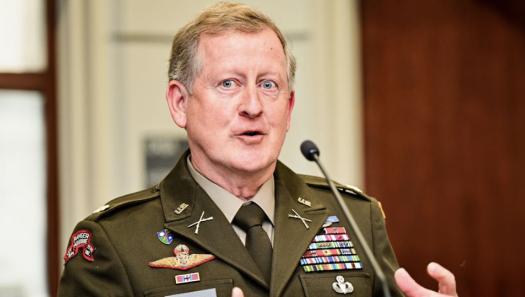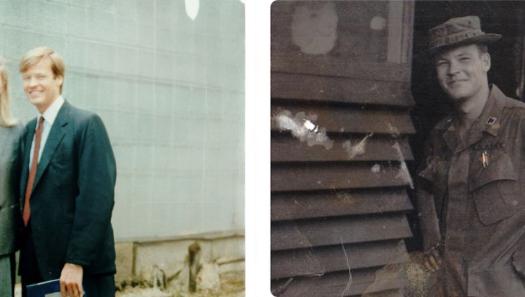Military & Veterans News
Vet News: Recruit Attrition Rates Fall Across The Services
Gerry J. Gilmore, American Forces Press Service

Recruit attrition rates are dropping across the services thanks to programs that try to prepare enlistees for the rigors of basic training before they ship out and revamped training policies.
All the services report increased use of delayed entry programs [DEP] in recent years, which acclimate recruits, enhance their performance and decrease washouts.
"We tell our recruiters to try to put enlistees into the delayed entry program to keep them better informed. They come ready to go to basic training," said Ed Castillo, a public affairs officer at the 37th Training Wing, Lackland Air Force Base, San Antonio.
DoD officials keenly watch recruit attrition numbers, especially since the cost of recruiting new service members averages about $11,000 each -- some $3,000 more than just a few years ago, said Navy Cmdr. Yvette BrownWahler, director for recruiting plans, Office of the Secretary of Defense.
Combined with an average cost of initial entry training at $35,000, DoD's investment in military recruit accessions and training is enormous since more than 200,000 of America's youth are recruited for active military service each year, she added.
Castillo noted that the Air Force's recruit attrition rate dropped from 8.8 percent in fiscal 1999 to 7.1 percent so far this year. The Air Force's delayed entry program, he said, is responsible for much of that success.
The services report that most recruits fail to complete basic training for medical reasons, including injuries and previously undisclosed physical or mental conditions, and other performance-related issues.
Castillo said recruits who sign up for DEP are usually high school students who might not report for basic training for up to a year after enlistment. During that time participants "meet with the recruiter once a month, sometimes more," he said.
DEP recruits receive a basic training booklet and watch videotapes on drill and ceremony, military customs, wear and care for military uniforms, and more, Castillo said. People who are out of shape join supervised exercise programs, he added.
"By the time they get to basic training, they're ready to go," Castillo said, adding that DEP participants also learn the military doesn't tolerate drug use.
DoD also attributes the drop in recruit attrition rates to modified basic training programs across the services, BrownWahler said, coupled with "a renewed emphasis by drill instructors to imbue soldiers, sailors, airmen, and Marines with a positive attitude in preparing them to be a part of the service team."
The Navy's recruit attrition rate in 1998 was about 17 percent; now it is about 14 percent, said Carl Ross, chief of staff of training at the Naval Training Center Great Lakes, north of Chicago. He credits the reduction to the effectiveness of the Navy DEP, but also to revamped boot camp training policies.
Army officials say recruit attrition has dropped from 19.7 percent in 1998 to around 13.6 percent today. Army officials also remarked that drill instructors want recruits to meet basic training standards and won't let recruits give up on themselves. The Army's New Start program, for example, provides additional training for recruits who fail to meet standards after remedial training.
After recruits report to the Parris Island, S.C., or San Diego depots, Marine drill instructors provide them every opportunity to succeed, said Maj. Bryan Salas, Parris Island depot public affairs officer.
"It is more challenging to train a recruit," Salas said. Attrition is "the easy way out."


